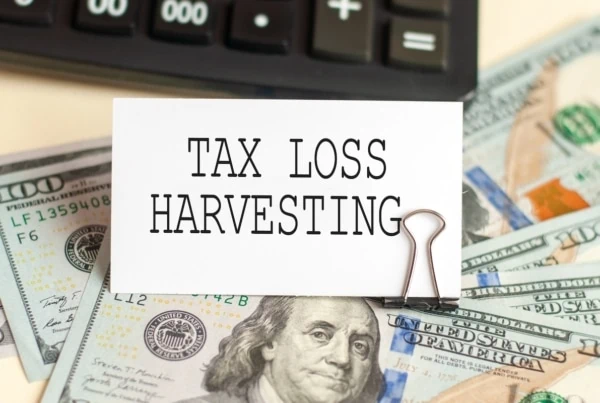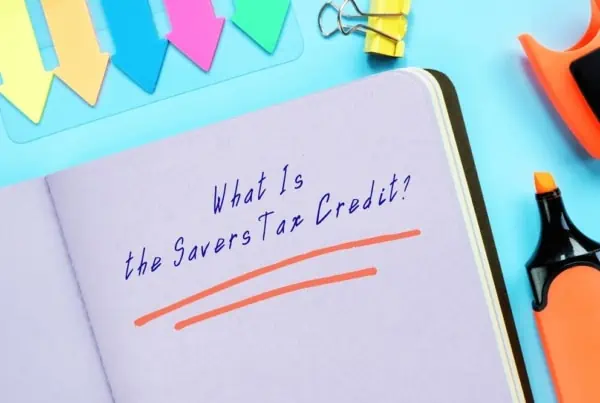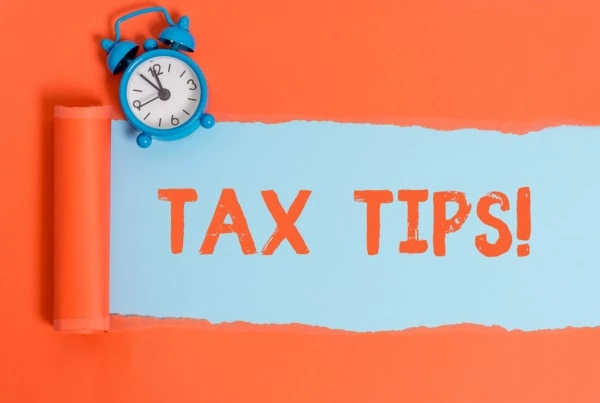The 2025 tax season will soon be upon us, so if you’re keeping an eye on your tax responsibilities for this year, you’ll be keenly interested in what your 2025 income tax burden might look like.
Which tax bracket you’re in and what tax rate you’ll pay are important pieces of the puzzle. That’s why taxpayers need to know and understand the annual changes to the tax brackets, and how the tax bracket you’re in dictates the rate you’ll pay.
If you’re not quite sure where you stand for the 2025 tax year (for returns you’ll file in 2026 covering income taxes you largely already paid in 2025), or if you’re an eager planner who’s already looking toward the 2026 tax year (for returns you’ll file in 2027 covering income taxes you largely already paid in 2026), you’ve come to the right place.
I’ll lay out the I’ll lay out the seven tax brackets and rates for both 2025 and 2026 in easy-to-understand tables, provide mathematical examples of how the tax brackets work, explain how to get a clearer understanding of what you owe with effective tax rates, offer tips for reducing your tax bill, and more. This should help with your understanding of how they’ve changed from this year to the next one.
Related: What’s Your Standard Deduction?
Federal Income Tax Rates for 2025 and 2026
![Federal Tax Brackets and Rates [2025 + 2026] 2 a clock and blocks that show the year 2025 changing to the year 2026.](https://youngandtheinvested.com/wp-content/uploads/2025-to-2026-change-640.webp)
The federal tax rates themselves haven’t changed from 2025 to 2026, since they’re not impacted by inflation from one year to the next. For both years, the seven federal tax rates are 10%, 12%, 22%, 24%, 32%, 35%, and 37%.
Most of these tax rates were scheduled to rise starting with the 2026 tax year. That’s because the federal tax rates were lowered by the Tax Cuts and Jobs Act beginning with the 2018 tax year—but the rate reduction was only temporary. If the temporary reduction expired, the seven federal income tax rates would have reverted to 10%, 15%, 25%, 28%, 33%, 35%, and 39.6%.
But that scheduled rate hike was effectively canceled with the passage of the One Big Beautiful Bill (OBBB), which made those brackets permanent.
Related: States That Tax Social Security Benefits
Federal Income Tax Brackets for 2025
![Federal Tax Brackets and Rates [2025 + 2026] 3 irs releases federal tax brackets 2025](https://youngandtheinvested.com/wp-content/uploads/irs-releases-federal-tax-brackets-2025-small.webp)
As we get into the tax brackets, let’s focus on the 2025 federal income tax brackets first, since most people are focused on filing their 2025 tax return at this time of year.
Young and the Invested Tip: The deadline for filing your 2025 federal income tax return is April 15, 2026.
The tax brackets that apply to your 2025 tax return, based on the filing status you use (e.g., single, married filing separately, married filing jointly, surviving spouse, or head of household), are shown in the tables below.
The tables provide the tax rate, taxable income range, and tax calculation instructions for each tax bracket. So, once you know your 2025 filing status and taxable income, you can find the tax bracket—and highest tax rate—that applies to you.
2025 Tax Brackets for Single Filers
| Tax Rate | Taxable Income Range | Tax Calculation |
|---|---|---|
| 10% | $0 to $11,925 | 10% of taxable income |
| 12% | $11,926 to $48,475 | $1,192.50 plus 12% of amount over $11,925 |
| 22% | $48,476 to $103,350 | $5,578.50 plus 22% of amount over $48,475 |
| 24% | $103,351 to $197,300 | $17,651 plus 24% of amount over $103,350 |
| 32% | $197,301 to $250,525 | $40,199 plus 32% of amount over $197,300 |
| 35% | $250,526 to $626,350 | $57,231 plus 35% of amount over $250,525 |
| 37% | $626,351 or more | $188,769.75 plus 37% of amount over $626,350 |
2025 Tax Brackets for Married Couples Filing Jointly and Surviving Spouses
| Tax Rate | Taxable Income Range | Tax Calculation |
|---|---|---|
| 10% | $0 to $23,850 | 10% of taxable income |
| 12% | $23,851 to $96,950 | $2,385 plus 12% of amount over $23,850 |
| 22% | $96,951 to $206,700 | $11,157 plus 22% of amount over $96,950 |
| 24% | $206,701 to $394,600 | $35,302 plus 24% of amount over $206,700 |
| 32% | $394,601 to $501,050 | $80,398 plus 32% of amount over $394,600 |
| 35% | $501,051 to $751,600 | $114,462 plus 35% of amount over $501,050 |
| 37% | $751,601 or more | $202,154.50 plus 37% of amount over $751,600 |
2025 Tax Brackets for Married Couples Filing Separately
| Tax Rate | Taxable Income Range | Tax Calculation |
|---|---|---|
| 10% | $0 to $11,925 | 10% of taxable income |
| 12% | $11,926 to $48,475 | $1,192.50 plus 12% of amount over $11,925 |
| 22% | $48,476 to $103,350 | $5,578.50 plus 22% of amount over $48,475 |
| 24% | $103,351 to $197,300 | $17,651 plus 24% of amount over $103,350 |
| 32% | $197,301 to $250,525 | $40,199 plus 32% of amount over $197,300 |
| 35% | $250,526 to $375,800 | $57,231 plus 35% of amount over $250,525 |
| 37% | $375,801 or more | $101,077.25 plus 37% of amount over $626,350 |
2025 Tax Brackets for Head-of-Household Filers
| Tax Rate | Taxable Income Range | Tax Calculation |
|---|---|---|
| 10% | $0 to $17,000 | 10% of taxable income |
| 12% | $17,001 to $64,850 | $1,700 plus 12% of amount over $11,925 |
| 22% | $64,851 to $103,350 | $7,442 plus 22% of amount over $48,475 |
| 24% | $103,351 to $197,300 | $15,912 plus 24% of amount over $103,350 |
| 32% | $197,301 to $250,500 | $38,460 plus 32% of amount over $197,300 |
| 35% | $250,501 to $626,350 | $55,484 plus 35% of amount over $250,525 |
| 37% | $626,351 or more | $187,031.50 plus 37% of amount over $626,350 |
Related: 11 Education Tax Credits and Deductions
How Do the Tax Brackets Work?
![Federal Tax Brackets and Rates [2025 + 2026] 4 education tax credits interest wooden cubes](https://youngandtheinvested.com/wp-content/uploads/education-tax-credits-interest-wooden-cubes.jpg)
Before getting to the 2026 tax brackets, it’s probably worthwhile at this point to explain how the tax brackets work (the explanation might also make more sense now that you’ve seen the 2025 brackets).
Many people think that all their income is taxed at the rate tied to their tax bracket. However, that’s not how the federal income tax brackets work. Instead, unless you’re in the 10% bracket, at least some of your income will be taxed at a lower tax rate than the rate connected to your tax bracket.
The U.S. tax code uses marginal tax rates, which basically means that only the income that falls within the taxable income range for each tax bracket is taxed at that bracket’s corresponding tax rate. Income below your marginal tax bracket is taxed at lower rates according to the income ranges for any lower tax bracket. As a result, marginal tax rates reduce income taxes for almost everyone.
Related: 30 Tax Statistics and Facts That Might Surprise You
Example
Nicholas is a single filer and has $60,000 of taxable income for the 2025 tax year. That puts him in the 22% tax bracket. However, he doesn’t owe 22% of $60,000, which would be $13,200 ($60,000 x .22 = $13,200). He actually owes less.
- The first $12,400 of Nicholas’s income is taxed at the 10% marginal tax rate, which results in $1,240 of tax.
- The next $38,000 of his income (i.e., from $12,401 to $50,400) is taxed at the 12% marginal tax rate, which adds $4,560 of tax.
- And, finally, the remaining $9,600 of Nicholas’s income (i.e., from $50,401 to $60,000) is taxed at the 22% rate, which comes to $2,112 of tax.
As a result, Nicholas’s total tax, when all of the separate amounts are added up, comes to $7,912, which is $5,288 less than the $13,200 tax if a flat 22% applied to all his income.
You can also see this calculation method play out in the various federal income tax brackets shown above. You’ll notice that, except for the 10% tax bracket, the tax calculations always begin with a dollar amount that is added to the amount taxed at the bracket’s corresponding marginal tax rate. The dollar amounts represent the tax due on all taxable income in each lower tax bracket.
So, looking at the 22% tax bracket above for single filers, you can see that the tax on income from the 10% and 12% brackets for the 2025 tax year equals $5,800—which is exactly the amount calculated for Nicholas in the example above ($1,240 + $4,560 = $5,800). Then, to determine the total tax amount, the tax rate tied to the taxpayer’s tax bracket is applied to the remaining income (i.e., the amount over the previous bracket’s upper threshold). The resulting amount is added to the tax from the lower brackets.
It’s important to note, though, that the tax amount resulting from use of the tax brackets isn’t necessarily what you will owe the IRS when your tax return is finished. After the tax is calculated, your final tax bill could be lower once any tax credits, withheld taxes, or estimated tax payments are subtracted from the total.
In some cases, your credits, withholding, and estimated payments can surpass the amount calculated using the tax brackets, in which case you might be due a refund.
Related: Earned Income Tax Credit: How Much, Eligibility + More
Federal Income Tax Brackets for 2026
![Federal Tax Brackets and Rates [2025 + 2026] 5 a sign that says taxes 2026 next to a clock and calculator.](https://youngandtheinvested.com/wp-content/uploads/2026-taxes-640.webp)
Pat yourself on the back if you’re already wondering about the 2026 tax brackets and rates. Thinking ahead (i.e., “tax planning”) can save you a lot of money. So, let’s get to the tax brackets for the 2026 tax year, which can be found below.
You’ll use the new tax brackets when you file your 2026 tax return, which won’t be due until April 2027. However, you can use them in advance to plan out any personal finance moves to lower the tax bill you’ll pay for the 2026 tax year.
2026 Tax Brackets for Single Filers
| Tax Rate | Taxable Income Range | Tax Calculation |
|---|---|---|
| 10% | $0 to $12,400 | 10% of taxable income |
| 12% | $12,401 to $50,400 | $1,240 plus 12% of amount over $12,400 |
| 22% | $50,401 to $105,700 | $5,800 plus 22% of amount over $50,400 |
| 24% | $105,701 to $201,775 | $17,966 plus 24% of amount over $105,700 |
| 32% | $201,776 to $256,225 | $41,024 plus 32% of amount over $201,775 |
| 35% | $256,226 to $640,600 | $58,448 plus 35% of amount over $256,225 |
| 37% | $640,601 or more | $192,979.25 plus 37% of amount over $640,600 |
2026 Tax Brackets for Married Couples Filing Jointly and Surviving Spouses
| Tax Rate | Taxable Income Range | Tax Calculation |
|---|---|---|
| 10% | $0 to $24,800 | 10% of taxable income |
| 12% | $24,801 to $100,800 | $2,480 plus 12% of amount over $24,800 |
| 22% | $100,801 to $211,400 | $11,600 plus 22% of amount over $100,801 |
| 24% | $211,401 to $403,550 | $35,932 plus 24% of amount over $211,400 |
| 32% | $403,551 to $512,450 | $82,048 plus 32% of amount over $403,550 |
| 35% | $512,451 to $768,700 | $116,896 plus 35% of amount over $512,451 |
| 37% | $768,701 or more | $206,583.50 plus 37% of amount over $768,701 |
2026 Tax Brackets for Married Couples Filing Separately
| Tax Rate | Taxable Income Range | Tax Calculation |
|---|---|---|
| 10% | $0 to $12,400 | 10% of taxable income |
| 12% | $12,401 to $50,400 | $1,240 plus 12% of amount over $12,400 |
| 22% | $50,401 to $105,700 | $5,800 plus 22% of amount over $50,400 |
| 24% | $105,701 to $201,775 | $17,996 plus 24% of amount over $105,700 |
| 32% | $201,776 to $256,225 | $41,024 plus 32% of amount over $201,775 |
| 35% | $256,226 to $384,350 | $58,448 plus 35% of amount over $256,225 |
| 37% | $384,350 or more | $103,291.75 plus 37% of amount over $384,350 |
2026 Tax Brackets for Head-of-Household Filers
| Tax Rate | Taxable Income Range | Tax Calculation |
|---|---|---|
| 10% | $0 to $17,700 | 10% of taxable income |
| 12% | $17,701 to $67,450 | $1,770 plus 12% of amount over $17,700 |
| 22% | $67,451 to $105,700 | $7,740 plus 22% of amount over $67,450 |
| 24% | $105,701 to $201,750 | $16,155 plus 24% of amount over $105,700 |
| 32% | $201,751 to $256,200 | $39,207 plus 32% of amount over $201,750 |
| 35% | $256,201 to $640,600 | $56,631 plus 35% of amount over $256,200 |
| 37% | $640,601 or more | $191,171 plus 37% of amount over $640,600 |
Inflation Adjustments for 2026 Tax Brackets
![Federal Tax Brackets and Rates [2025 + 2026] 6 a piggy bank and a shopping cart are on opposite sides of a seesaw.](https://youngandtheinvested.com/wp-content/uploads/inflation-cart-piggy-scale-640.webp)
As noted above, the tax rates for 2026 are the same as the rates for 2025—10%, 12%, 22%, 24%, 32%, 35%, and 37%. However, the taxable income ranges for each federal income tax bracket are adjusted each year to account for inflation. As a result, the tax brackets for 2026 are different than the 2025 brackets.
Inflation adjustments increase both the “floor” and “ceiling” of each tax bracket. They also expand the “width” of each bracket’s taxable income range (i.e., the gap between the bracket’s lower and upper income thresholds).
For instance, the 22% tax bracket for single filers applies to $53,375 of income for the 2024 tax year (i.e., income from $47,150 to $100,525), but it applies to $54,875 of income for 2025 (i.e., income from $48,475 to $103,350) and $55,300 of income in 2026 ($50,400 to $105,700). That’s an increase of about 2.8% to the bracket’s width from 2024 to 2025, and about 4% for 2025 to 2026. (For reference, the bracket ranges increased an eye-popping 7.1% from 2022 to 2023 and 5.4% from 2023 to 2024.)
But don’t worry—the annual adjustments for inflation are actually a good thing. They help prevent “bracket creep,” which is when you find yourself in a higher tax bracket from one year to the next even though your income grows slower than the rate of inflation.
For example, if Nicholas, who is a single filer, sees his taxable income grow from $102,000 to $105,000 from 2025 to 2026, he’s still going to be in the 22% bracket when he completes his 2026 tax return. However, if the bracket’s width hadn’t increased in 2026, then Nicholas would find himself in the 24% bracket, which would apply to single filers once 2026 income exceeds about $103,350.
A smaller increase to the brackets’ width can also push you down to a lower tax bracket. For instance, if Harper’s income rises from $49,000 to $50,000 from 2025 to 2026, she would drop from the 22% bracket for singles for 2025 to the 12% bracket for 2026. But if the 22% bracket’s width had increased by only 2% for 2026, then Harper would remain in the 22% bracket for 2026, which would likely kick in around the $49,445 mark.
Related: Student Loan Interest Deduction: How Much, Eligibility + More
What’s Your Effective Tax Rate?
![Federal Tax Brackets and Rates [2025 + 2026] 7 man thinking with question marks](https://youngandtheinvested.com/wp-content/uploads/man-thinking-with-question-marks.webp)
There’s a different tax rate that you may have heard of: an effective tax rate. It refers to the percentage of your taxable income paid in income tax. Because use of marginal tax rates results in your income being taxed at different rates, it’s not necessarily the best indicator of your overall income tax burden. Many people believe using your effective tax rate provides a clearer picture.
To calculate your effective tax rate, divide your tax as calculated using the tax brackets or tax tables (Line 16 on your 2025 Form 1040) by your taxable income (Line 15 on your 2023 return). Note: Form 1040 for 2026 hasn’t yet been released.
To illustrate, assume you’re a single taxpayer with a 2025 taxable income of $55,000. According to the 2025 tax bracket for single filers, you owe $7,014 in tax. In that case, your effective tax rate is rounded to 12.8% ($7,014 ÷ $55,000 = 0.1275), even though you fall within the 22% tax bracket.
Tips for Lowering Your Tax Rate for the 2026 Tax Year
![Federal Tax Brackets and Rates [2025 + 2026] 8 eraser taxes](https://youngandtheinvested.com/wp-content/uploads/eraser-taxes.webp)
What can you do if it looks like you might be in a higher tax bracket for the 2026 tax year? My advice is to do whatever you can between now and the end of the year to lower your taxable income. If you can bring your taxable income down enough, you just might find yourself in a lower tax bracket when you file your federal tax return next year.
Here are a few common ways to bring down your taxable income for the year.
Contribute to “Pre-Tax” Retirement Savings Accounts
With “pre-tax” retirement accounts, you get a tax break when you put money in the account. For example, if you squirrel away money in a traditional IRA, you can generally claim a tax deduction for the amount contributed. Likewise, if you have money taken out of your paycheck and deposited into a traditional 401(k) account, that money isn’t included as income on your W-2 form. Either way, your taxable income for the year is lower, which could put you in a lower tax bracket.
Young and the Invested Tip: If you’re self-employed or a small business owner, you can get similar results by opening and contributing to a SEP IRA, SIMPLE IRA, or solo 401(k) plan.
However, make sure you don’t exceed the contribution limits for these types of retirement accounts. Doing so can result in a stiff penalty from the IRS.
For 2025, the annual contribution limit for all your IRAs is $7,000 if you’re under age 50, or $8,000 if you’re 50 or older. (This extra $1,000, which is only allowed for people who are at least 50 years old, is called a “catch-up” contribution.)
The 2025 contribution limit for 401(k) plans is $23,500 if you’re under 50 years. If you’re age 50 to 59, or 64 or older, you can put in up to $31,000. If you’re between the ages of 60-63 you can put in up to $34,750.
2026 contribution limits for retirement plans have not yet been released.
Related: Should You Max Out Your 401(k) Each Year? [Yes…and No]
Put Money Into a Health Savings Account
If you’re covered by a qualified high-deductible health plan (HDHP), you can also make “pre-tax” contributions to a health savings account (HSA). The tax deduction you get for the money contributed to an HSA will lower your taxable income … just like contributions to a traditional IRA.
You also have to worry about the annual HSA contribution limits … just like with a traditional IRA or 401(k) plan. The 2025 HSA contribution limits are:
- $4,300 if you have self-only coverage under a HDHP
- $8,550 if you have family coverage under a HDHP
The 2026 HSA contribution limits are:
- $4,400 if you have self-only coverage under a HDHP
- $8,750 if you have family coverage under a HDHP
If you’re at least 55 years old at the end of the year, you can contribute an additional $1,000 for the year.
Related: How to Use Your HSA for Retirement
Give More to Charity
If you plan to itemize instead of claiming the standard deduction, giving more to charity can lower your taxable income. That’s because itemizers can claim a charitable tax deduction for donations to religious, charitable, educational, scientific, or literary organizations.
You can get a deduction for cash or non-cash donations. So, if you want to declutter your house, empty out those closets of any no-longer-needed linens, clothes, shoes, household goods, and anything else you can think of to donate. Doing so could lower your taxable income and cut your 2025 and 2026 tax bills.
If you volunteer for a charitable organization, you can also deduct 14¢ for every mile you drive during the year while volunteering. Parking fees and tolls you pay while volunteering for a charitable organization are also deductible, as long as you aren’t reimbursed for those costs.
You might also get an income tax deduction for donating stock to charity (although the deduction could be limited to a percentage of your adjusted gross income). If you donate appreciated property like stock to a charitable organization, you also won’t have to pay capital gains tax on the increase in value.
However, you generally can’t deduct donations or gifts for which you received a benefit in return (e.g., food, entertainment, or merchandise). In that case, you can only deduct the value of your gift or donation that’s more than the value of the benefit you received.
Pre-Pay Deductible Expenses
When we get closer to the end of the year, paying certain expenses in 2025, instead of in 2026, could also lower your taxable income for the year.
For example, if your child is attending college and you have a tuition bill due in January, paying the bill in December could allow you to claim the American Opportunity tax credit for the 2025 tax year—or claim a larger credit for 2025.
If you itemize, scheduling medical or dental appointments in 2025 that you otherwise wouldn’t bother with until next year could also help lower this year’s taxable income. Just be aware that you can only deduct medical or dental expenses that exceed 7.5% of your adjusted gross income. So, if you’re still not going to spend that much on medical or dental procedures, then it’s not worth scheduling appointments early. However, if you’ve already exceeded that threshold, then pack as many other medical or dental expenses into the year as possible, since you might not be able to deduct the additional medical bills next year.
Related: When Are Taxes Due? [2025 Tax Deadlines]
There’s Still Time to Cut Your 2025 Tax Bill, Too
![Federal Tax Brackets and Rates [2025 + 2026] 9 tax checklist](https://youngandtheinvested.com/wp-content/uploads/tax-checklist.webp)
Even though the 2025 tax year is almost over, you can still lower your 2025 tax bill … and save for future expenses at the same time. That’s a win-win!
You have until the April 15, 2026, tax filing deadline to contribute to an IRA and HSA for the 2025 tax year. If you don’t request a tax filing extension, it’s also the deadline for sole proprietors and single-member LLCs to commit to a solo 401(k) for 2025, or for anyone to contribute to a SEP IRA for the year.
If you make “pre-tax” contributions to one of these accounts (e.g., to a traditional IRA instead of a Roth IRA), you can generally claim a tax deduction for the amount contributed. So, if you make a contribution for the 2025 tax year before the April deadline, that tax deduction can reduce the amount of tax you owe for 2025 (i.e., on the federal income tax return you file in 2026).
Just make sure you don’t exceed the 2025 annual contribution limits for the type of account that you put money in for the 2025 tax year. Doing so can result in a stiff penalty from the IRS.
Young and the Invested Tip: If you put money in one of these accounts in 2025 before the April 15 due date, make sure you let the account administrator know that your contribution is for the 2025 tax year.
Related:




![Federal Tax Brackets and Rates [2025 + 2026] 1 federal tax brackets rates fixed](https://youngandtheinvested.com/wp-content/uploads/federal-tax-brackets-rates-fixed-584x389.webp)



